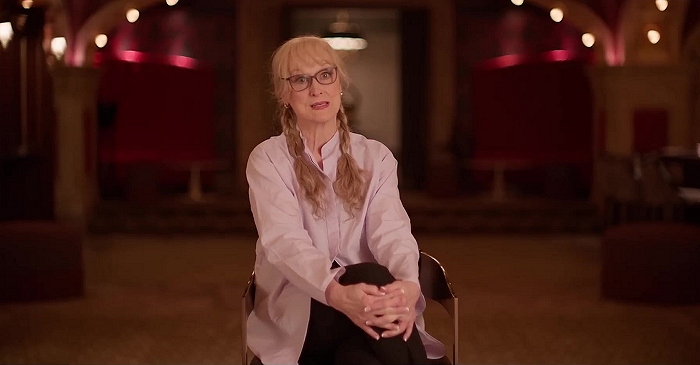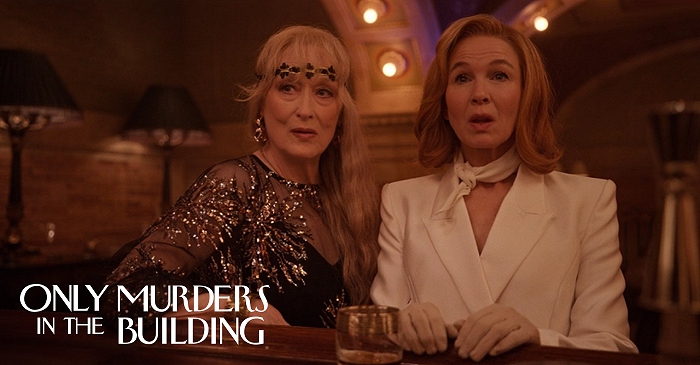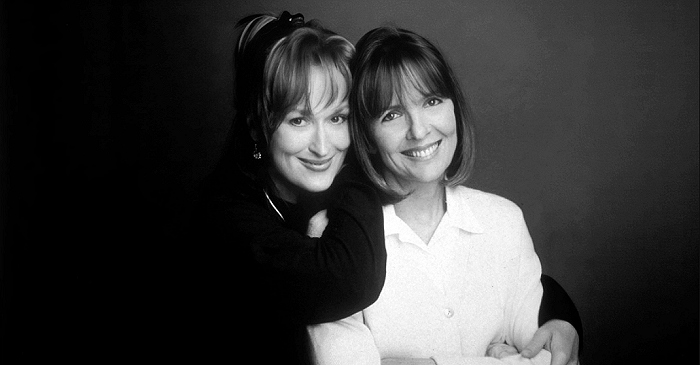|
Simply Streep is your premiere online resource on Meryl Streep's work on film, television and in the theatre - a career that has won her acclaim to be one of the world's greatest living actresses. Created in 1999, Simply Streep has built an extensive collection over the past 25 years to discover Miss Streep's body of work through thousands of photographs, articles and video clips. Enjoy your stay and check back soon.
|
|
Interview with Meryl Streep
The Chicago Sun-Times ·
December 14, 1983
· Written by Roger Ebert
| ||
How does an actress go about preparing to play another human being? And what if the other person’s friends are standing by to see what you do? Meryl Streep has played realistic characters before, but they were creations of the filmmakers. Her new role is Karen Silkwood, who really lived and breathed and died a controversial death, and whose lover was standing by to tell Streep what he remembered and suspected about her. “I didn’t try to turn myself into Karen. I just tried to look at what she did,” Streep said the other afternoon, slowly and thoughtfully. “I put together every piece of information I could find about her, all the legal hearings and depositions and appeals. I talked a lot with Drew Stephens, who was her lover. I met with her dad. And basically what I figured out is that everybody has a different impression of you. Your lover, mother, coworker, all have these varying and contradictory impressions, and what you get is not the portrait of one person, but of three or four. “What I finally did was look at the events in her life, and try to understand her from the inside. She worked here, she saw this, here’s what she did about it – concentrating on her experiences instead of whatever was going on in her mind. For example, Drew told me she smoked a lot. So do I, in the movie. I decided that for Karen, smoking was real important. There are times in the movie when she feels all alone and smoking is instant gratification. Once when she goes to visit her kids in Texas and she’s unhappy, she reaches for that cigarette with a sort of desperation.” Streep’s fingers reached for an imaginary cigarette. She was curled up in the corner of a sofa in a Chicago hotel suite. She had decided to come to the Midwest to promote her new movie, “Silkwood,” because she thought it might appeal more directly to the people out here. It’s not so much the story of a controversial nuclear worker, she said, as about a working-class woman and what happened to her when she decided to make trouble.
“Karen Silkwood has come to stand for so many things to so many people that I had to start all over again in trying to play her as a person, not a symbol. I really don’t think we can know much about people after they’re not there to tell us. All their real, real secrets die with them. At the end of this whole experience of making this movie, I thought about those minutes before Karen’s car went off the road, and I missed her. What a waste of life.” But you didn’t want to “become” Karen Silkwood, in the sense that a Method actor tries to inhabit a role? “Not really. But three weeks ago, when I saw the whole movie put together for the first time, I had a sort of a chill. At moments it really felt as if she were walking through the movie. And at the end, that last shot of Karen’s gravestone? That’s really hers. It’s not a fake put up by the prop department. Originally there was some discussion with Mike Nichols, the director, as to whether that might be ‘too much.’ But this was her life, and that was her stone.” After Karen Silkwood died in 1974, there was a national controversy over the circumstances of her death. She was killed in a single-car accident while driving to meet a reporter for the New York Times. She was expected to hand over some documents revealing serious gaps in the safety measures at a Kerr-McGee nuclear factory in Oklahoma. The documents were not found in her car. Supporters of Silkwood suggest her death was not accidental. The company and an investigating state policeman cite the presence of tranquilizers and alcohol in her bloodstream, and call the death an accident.
I asked Streep if she had an opinion about Karen Silkwood’s death. “Yes.” About whether she was murdered? “Yes, I have a definite opinion.” Which is? “But I’m not going to tell you. I think I’d better keep it to myself. There are a lot of legal complications involved with this movie. For example, whenever the movie says that the Kerr-McGee Company did something, it’s based on a matter of public record. Otherwise we would have had to change the name of the company, the characters, everything.” One of the surprising things about the movie, I said, is that it seems so real, so convincing, in an unforced way. It records the speech and the energies, the rhythms and humors of Oklahoma working-class life in a way that never seems processed through a Hollywood formula.
Streep said she had a theory about that. “It’s the difference between boldface and regular type,” she said. “The words are the same, but in boldface they stand out more, and you can see that somebody’s making a point of calling your attention to them. A lot of so-called real life in the movies is boldface. The actors are underlining the ‘reality.’ What we were trying to do here was just give the regular body type. In other words, there’s nothing especially sensational about the lives these people lead.” In the movie, Streep lives in a sort of shabby, rundown house with some other people, including her boyfriend (played by Kurt Russell) and another friend, played by Cher, who turns out to be a lesbian. One night Cher brings home a girlfriend (Diana Scarwid), and the next morning, Streep and Russell meet her: She’s a beautician at the local mortuary.” “Now see, a detail like that, it’s so bizarre you might be tempted to leave it out,” Streep said. “But people do have jobs like that, and why leave it out? Why not just accept it, along with everything else in life that’s unexpected?” One of the more unexpected things in the movie, I said, was the performance by Cher, which is so good and so natural I had to keep reminding myself that this really was Cher, of Sonny and Cher – although I already know from her performance last year in Robert Altman’s “Come Back to the 5 and Dime, Jimmy Dean, Jimmy Dean,” that Cher has emerged as a genuine dramatic talent. “It’s surprising, not that she can perform, but that she’s as good as she is,” Streep said. “Here’s a women who’s been performing for 20 years. She’s intelligent, of course she can act. But she’s so wonderful in this role that’s nothing like her!” Was there any initial awkwardness on the set between the two of you?
“On both sides. We had to get used to each other. Accept each other. On my side, I was thinking, Cher! You know, from ‘I Got You Babe’ and all those other records I bought. She, on the other hand, apparently had an image of me as sitting at the right hand of Dame Edith Sitwell. I think she was intimidated by my rep. “Also, of course, she was conscious of her appearance. She likes to be seen in public with her makeup on. That’s very understandable to any woman. Once they took all her makeup away, and made her into the character, there was just all this emotion and truth there. The scene where we sit on the porch swing and hold each other . . . by the time we got to that scene, we were both on the same wavelength.” There was a cry from the next room, and Streep got up. She was traveling with her new baby, a 4-month-old daughter, and it was nursing time. “Who was Karen Silkwood, and how did I relate to her? Actually, I think Karen is more like I really am than any other part I’ve been able to play. I grew up in small towns, I worked for a living, I lived for a while in a commune in Vermont where nobody had any money and nobody knew whose things were whose – just like in Karen’s household. I felt we were a lot alike. And another thing that’s the same. If I die, nobody will know what I was really like, and that’s the truth.”













